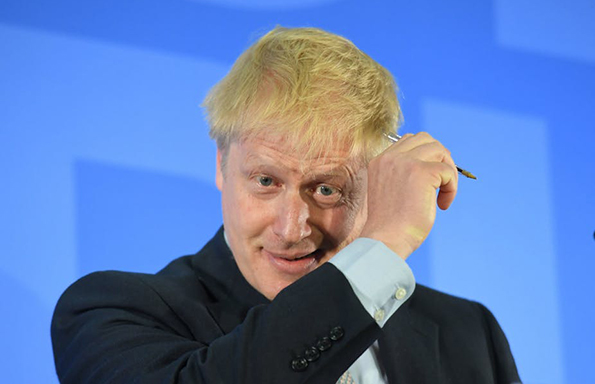Dr David Jeffery is a Lecturer in British Politics in the University of Liverpool’s Department of Politics
It’s been a long time coming, but finally we have seen the first round of the Conservative Party’s leadership election. Boris Johnson leads the pack with 114 votes – 36.4% of Conservative MPs – with the next placed candidate, Jeremy Hunt, on 13%. Michael Gove and Dominic Raab come third and fourth respectively. Andrea Leadsom, Mark Harper, and Esther McVey were all eliminated after failing to get more than 5% of votes.
There have been a number of different outlets predicting who is backing who, and although we can never be sure of how MPs will actually vote in the privacy of the polling booth, we can expect MPs to broadly act in line with their public declarations.
I have taken the list of declarations of support published on the Guido Fawkes blog and used this information to map out what we can learn about the support base for each candidate, in social, geographic, political and ideological terms. (Note: this data was correct at the time of writing, around midday on June 13 2019 – Matthew Hancock has dropped out since then).
Boris Johnson is not so popular among women
The first variable I looked at is gender. Conservative MPs are overwhelmingly male (80% to 20% female), but some candidates are more popular with women MPs and some with men.
Flourish, Author provided
Of the remaining candidates, Stewart has the best gender split, with 38% of his support from women MPs.
Interestingly, Dominic Raab – who recently declared he was not a feminist, albeit like the majority of the UK – has the greatest proportion of female support of the leading four candidates – Johnson, Hunt, Gove and Raab. His supporters are 25% female and 75% male.
Of the remaining big hitters, Johnson has the lowest proportion of female support, at just 13%, followed by Hunt at 15%. This is despite being backed by current defence secretary Penny Mordaunt and work and pensions secretary Amber Rudd.
Gove is big in Scotland, Javid in the Midlands
Conservative MPs are predominantly from the south of England (60% of Tory MPs represent this region), and it is from here that most candidates draw the bulk of their support.
Flourish, Author provided
Michael Gove and Sajid Javid stand out for having a lower proportion of their support coming from southern England. Gove is particularly strong in Scotland (although weak in Wales) and Javid draws on greater support from the Midlands (although he is weak in Scotland). Stewart’s appeal is limited to England – at least in terms of formal backings.
Raab’s MP base is more Brexity than Johnson’s
Where MPs stood on the EU referendum of 2016 provides a clear dividing line between candidates. Only Raab and Johnson draw a majority of declared support from MPs who supported Leave. Raab’s support is the most Leave-heavy – 83% of his support backed Leave in 2016, compared to 67% for Johnson.
Flourish, Author provided
Curiously, Gove – despite being a leading figure in the Vote Leave campaign – draws 64% of his support from Remain voters. This might be because of his enthusiastic support for Theresa May’s withdrawal agreement, which has hurt him in the eyes of Leave supporting Conservative MPs.
The ERG backs Raab
The European Research Group, which represents the most eurosceptic Conservative MPs, has been a big player in Conservative Party politics recently, most famously in its abortive attempt to bring down May in a no-confidence vote in December 2018.
Flourish, Author provided
Given that this group lobbies for the hardest form of Brexit, it’s interesting to look at which horse it’s backing. Raab leads the field, getting 67% of his supporters from the ERG. Johnson only gets 47% of his support from the group.
Candidates associated with Remain all score poorly among ERG members, but while Stewart fails to win a single ERG MP, Hunt has two supporters.
Gove’s supporters now prefer Johnson
Finally, when you map the 2016 leadership election results onto the current crop of candidates, you can see how support has shifted around the house.
Gove draws just 21% of his support now from the people who supported his leadership bid in 2016.
The MPs who supported May in 2016 went overwhelmingly for Remain supporters and Cabinet members Javid, Hunt, Hancock (before he dropped out) and Stewart. Those who supported Leadsom have now gone to Raab and Johnson.
Flourish, Author provided
Interestingly, Gove is drawing a large proportion of his support from MPs who were not in the House Commons in 2016 – 30% – Stewart has 13%. This suggests something of a generational element to candidate dynamics.
Even after the contest has been cut down to seven candidates, some of whom have low levels of declared support, analysis like this are always going to be messy. But we can see some key divides emerging. Perhaps not surprisingly, this is a Leave-Remain battle.
Of the leading four candidates, Raab holds the outer Brexit flank, closely followed by Johnson – who, although also having largely eurosceptic support, also draws a greater absolute level of support from Remain MPs too. Worryingly for Hunt and Gove, they are both drawing on support from the Remain side of Conservative MPs.
This article is republished from The Conversation under a Creative Commons license. Read the original article.
